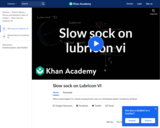
What would happen to a slowly moving frozen sock on a frictionless planet
- Subject:
- Physical Science
- Physics
- Material Type:
- Lesson
- Provider:
- Khan Academy
- Author:
- Khan Academy
- Date Added:
- 09/22/2013

What would happen to a slowly moving frozen sock on a frictionless planet
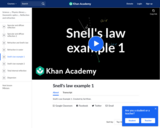
Snell's Law Example 1
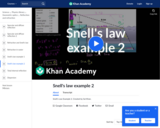
Snell's Law Example 2
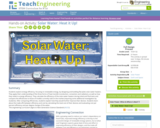
Students explore energy efficiency, focusing on renewable energy, by designing and building flat-plate solar water heaters. They apply their understanding of the three forms of heat transfer (conduction, convection and radiation), as well as how they relate to energy efficiency. They calculate the efficiency of the solar water heaters during initial and final tests and compare the efficiencies to those of models currently sold on the market (requiring some additional investigation by students). After comparing efficiencies, students explain how they would further improve their devices. Students learn about the trade-offs between efficiency and cost by calculating the total cost of their devices and evaluating cost per percent efficiency and per degree change of the water.

This lesson discusses solenoids. Students learn how to calculate the magnetic field along the axis of a solenoid and complete an activity exploring the magnetic field of a metal slinky. Solenoids form the basis for the magnet of an MRI. Exploring the properties of this solenoid helps students understand the MRI machine.

In the electrical engineering, solid-state materials and the properties play an essential role. A thorough understanding of the physics of metals, insulators and semiconductor materials is essential for designing new electronic devices and circuits. After short introduction of the IC fabrication process, the course starts with the crystallography. This will be followed by the basic principle of the quantum mechanics, the sold-state physics, band-structure and the relation with electrical properties of the solid-state materials. When the material physics has been throughly understood, the physics of the semiconductor device follows quite naturally and can be understood quickly and efficiently. Study Goals: The student can 1) determine the crystal structure, the density of atoms and the Miller indices of a crystal, 2) apply Schrodinger's wave equation to various potential functions and derive a probability of finding electrons, 3) discuss the concept of energy band formation and difference of material properties in terms of the band, 4) derive the concentrations of electron and holes with a given temperature in terms of Fermi energy, and 5) can discuss drift, diffusion and scattering of carriers in a semiconductor under various temperature and impurity concentrations.
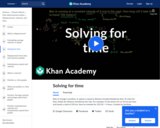
Simple example of solving for time given distance and rate
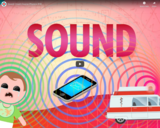
The video resource "Sound: Crash Course Physics #18" is included in the "Sociology" course from the resources series of "Crash Course". Crash Course is a educational video series from John and Hank Green.

Mr. Andersen explains how sound waves are created and perceived. A brief discussion of pitch and loudness are included. A generated sound of varying pitches is also included.
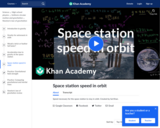
Speed necessary for the space station to stay in orbit
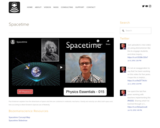
Paul Andersen explains how the dimensions of space and time are combined in relativistic mechanics. Gravity and velocity can affect both space and time according to Albert Einstein's Special Law of Relativity.
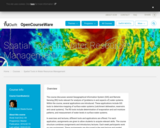
The course discusses several Geopgraphical Information System (GIS) and Remote Sensing (RS) tools relevant for analysis of (problems in and aspects of) water systems. Within the course, several applications are introduced. These applications include GIS tools to determine mapping of surface water systems (catchment delineation, reservoirs and canal systems). The RS tools include determination of evaporation and soil moisture patterns, and measurement of water levels in surface water systems. In exercises and lectures, different tools and applications are offered. For each application, assignments are given to allow students to acquire relevant skills. The course structure combines assignments and introductory lectures. Each week participants work on one assignment. These assignments are discussed in the next lecture and graded. Each week a new assignment is introduced, together with supporting materials (an article discussing the relevant application) and lectures (introducing theoretical issues). The study material of the course consists of a study guide, assignments, lecture material and articles. The final mark is the average of the grades of the individual assignments.
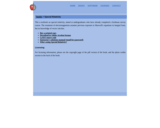
This a textbook on special relativity, aimed at undergraduates who have already completed a freshman survey course. The treatment of electromagnetism assumes previous exposure to Maxwell's equations in integral form, but no knowledge of vector calculus.
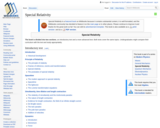
The Special Theory of Relativity is a theory of classical physics that was developed at the end of the nineteenth century and the beginning of the twentieth century. It changed our understanding of older physical theories such as Newtonian Physics and led to early Quantum Theory and later the Theory of General Relativity. Special Relativity is one of the foundation blocks of physics.
This book will introduce the reader to, perhaps, the most profound discovery of the twentieth century and the modern world: the universe has at least four dimensions.
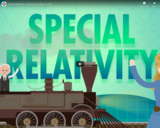
The video resource "Special Relativity: Crash Course Physics #42" is included in the "Statistics" course from the resources series of "Crash Course". Crash Course is a educational video series from John and Hank Green.
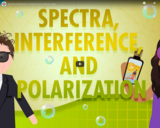
The video resource "Spectra Interference: Crash Course Physics #40" is included in the "Statistics" course from the resources series of "Crash Course". Crash Course is a educational video series from John and Hank Green.

Students use the spectrographs from the "Building a Fancy Spectrograph" activity to gather data about light sources. Using their data, they make comparisons between different light sources and make conjectures about the composition of a mystery light source.

Paul Andersen explains how light that is perfectly reflected creates specular reflection. The angle of the incident ray is equal to the angle of the reflected ray. Specular reflection is also known as mirror-like reflection. If the reflecting surface is irregular it will create diffuse, rather than specular, reflection.
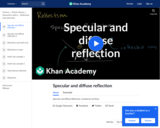
Specular and Diffuse Reflection
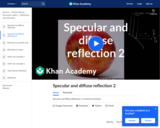
Specular and Diffuse Reflection 2